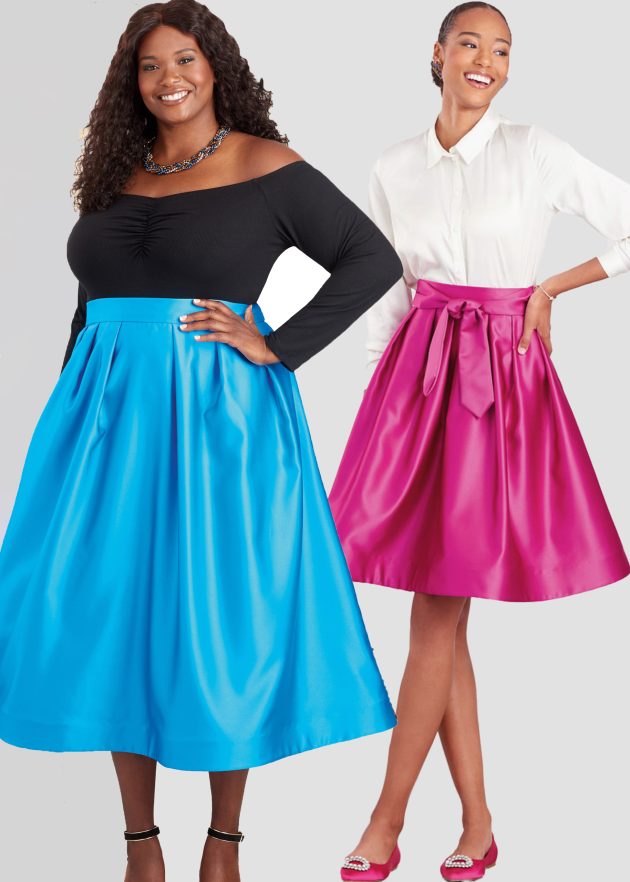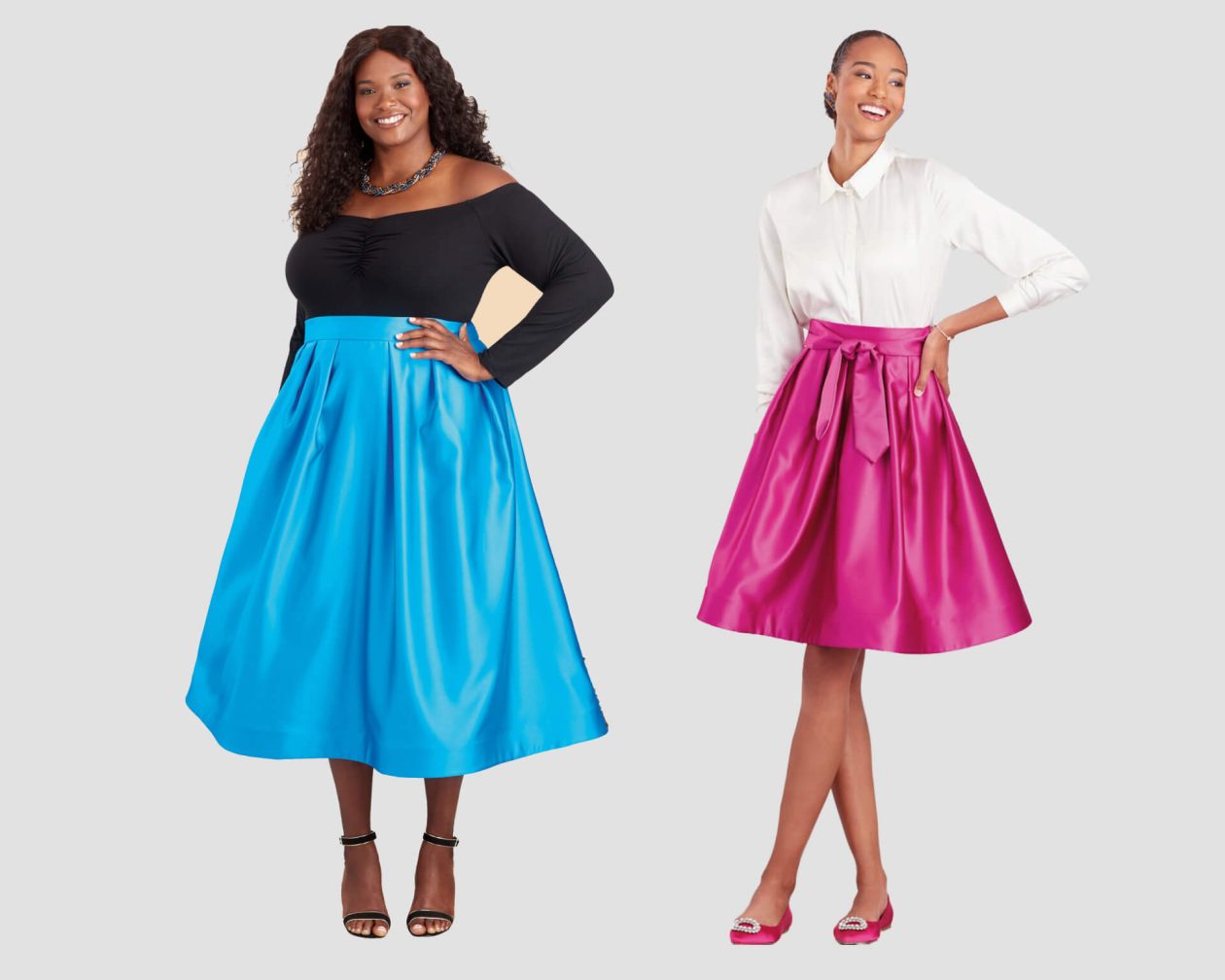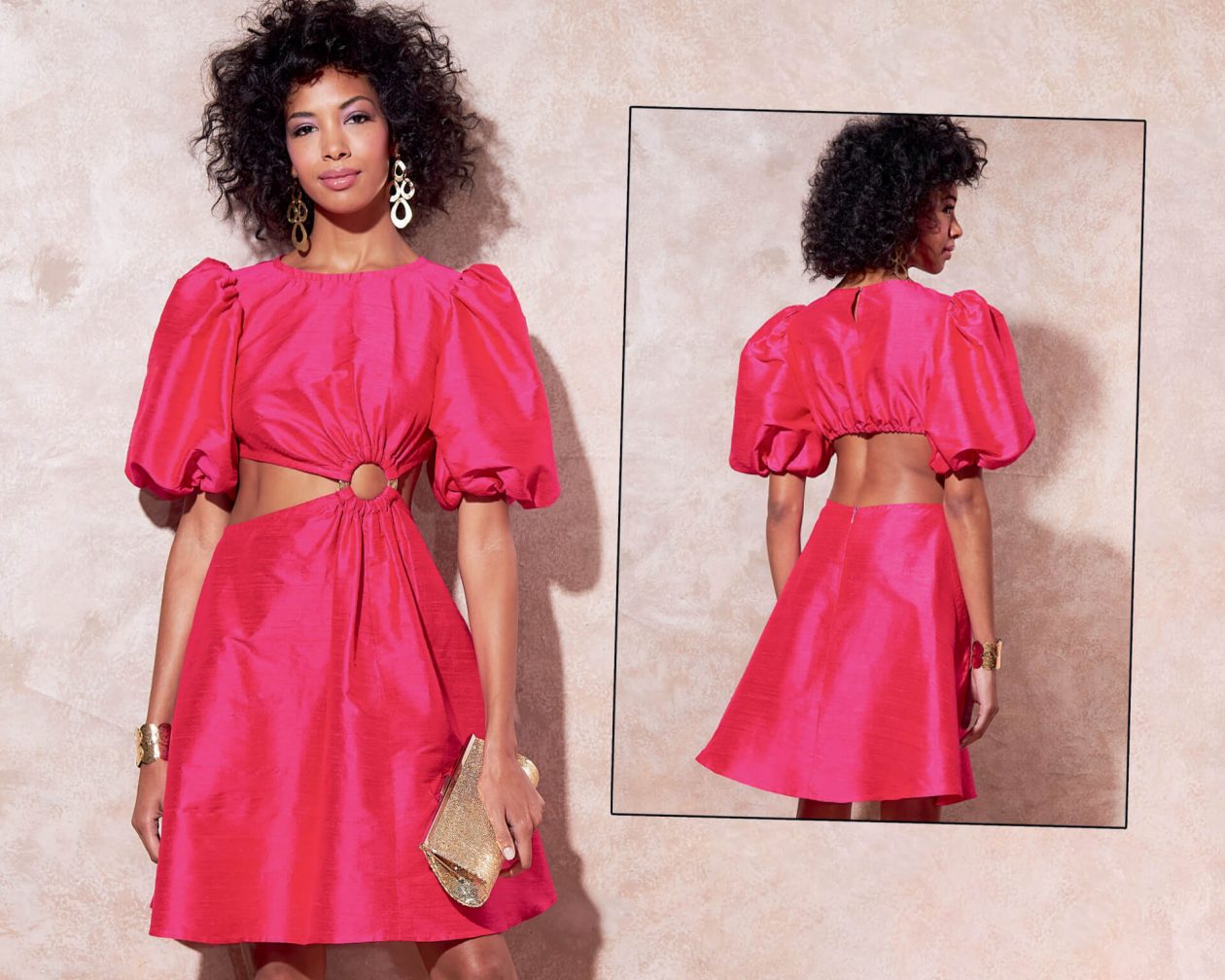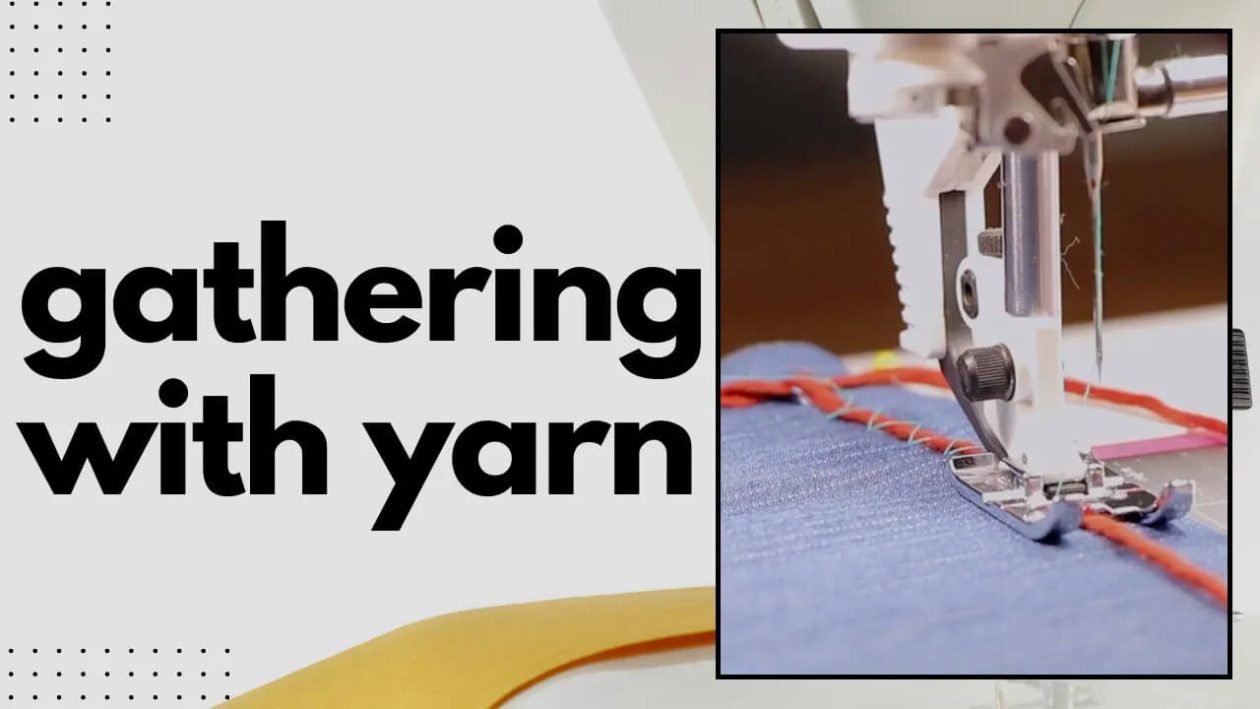
Sewing taffeta fabric – patterns and tips for success
Taffeta fabric is a luxurious and versatile fabric that adds elegance to any project. Traditionally, taffeta was made from silk, but with the boom of synthetic fibres, textile manufacturers started making the fabric from rayon and polyester instead.
Why not try Simplicity 9711 / 9712 – these taffeta skirts are gathered at the waist with a flat waist band. A signature sash finishes the look!
Or McCall’s 8252 would look beautiful in taffeta, to give the skirt and puff sleeves extra drama.

Sewing taffeta fabric can be a bit challenging due to its delicate nature and tendency to fray easily. With the right techniques and tools, you can successfully create beautiful garments using taffeta. Here are some helpful tips and advice for sewing with taffeta fabric:
PREPARING THE FABRIC
Before you begin sewing, it’s essential to prewash and press your taffeta fabric. This will help remove any sizing or chemicals and allow the fabric to shrink if needed. Be sure to follow the care instructions specific to your taffeta fabric. Pressing the fabric with a low heat setting and using a pressing cloth will help maintain its lustrous appearance.
CUTTING THE FABRIC
Taffeta has a tendency to fray, so it’s crucial to handle it with care during the cutting process. Use sharp fabric scissors or a rotary cutter to ensure clean and precise cuts. To minimize fraying, consider using pinking shears or applying a seam sealant along the raw edges. Remember to use a nap layout! This means cutting your pieces in a single direction. Shiny fabrics like taffeta reflect the light differently when rotated in different directions and can appear a different shade of colour to the eye.
CHOOSING THE RIGHT NEEDLES AND THREAD
When sewing with taffeta, opt for a fine, sharp needle such as a microtex or universal needle. These needles will help prevent snags and visible holes in the fabric. Additionally, select a high-quality thread that matches your taffeta fabric. Avoid using thick or heavy threads as they can create bulk and compromise the delicate nature of the fabric.

SEAM FINISHES
Taffeta fabric can fray easily, so it’s crucial to finish your seams properly. Consider using French seams or Hong Kong seams to encase the raw edges and give a clean finish to your garment. Alternatively, you can use a serger / overlocker to finish the seams. Test the seam finishes on a fabric scrap to ensure they don’t add unnecessary bulk or stiffness to the fabric.
PINNING AND MARKING
Taffeta is prone to snagging, so it’s advisable to use fine pins with rounded heads when pinning the fabric together. Take care not to pin too close to the fabric’s edge to avoid leaving visible holes. Instead of using marking tools that could leave permanent marks, try using tailor’s chalk or thread-tracing to mark your pattern onto the fabric.
HANDLING GATHERS AND PLEATS
Taffeta is an excellent fabric for creating beautiful gathers and pleats. To ensure clean and crisp gathers, use a long stitch length and sew two rows of gathering stitches. Carefully pull the bobbin threads to create even gathers, distributing them evenly along the fabric. When pleating taffeta, baste the pleats in place before sewing them permanently to achieve precise and professional-looking results.
See our video tutorials on multiple ways to gather fabric for further support.

PRESSING AND IRONING
Taffeta is sensitive to heat, so it’s essential to take caution while pressing and ironing. You may ruin the shine of your fabric or worse, scorch the material without meaning to! Set your iron to a low or medium heat setting and use a pressing cloth to protect the fabric’s surface. Avoid using steam unless your taffeta fabric specifically allows it. Gently press the fabric without applying too much pressure to prevent flattening the fabric’s natural sheen.
FINISHING TOUCHES
Taffeta fabric is often used for special occasion garments, so paying attention to the finishing touches is crucial. Consider using understitching to keep facings and linings in place, or use hand-stitching techniques such as slipstitching or blind hemming for a clean and invisible finish. Horsehair braid gives a stiff finish to hems for a dramatic look and is easy to install.
Remember, practice makes perfect when sewing with taffeta fabric. Take your time, test your techniques on fabric scraps, and don’t hesitate to make adjustments along the way.